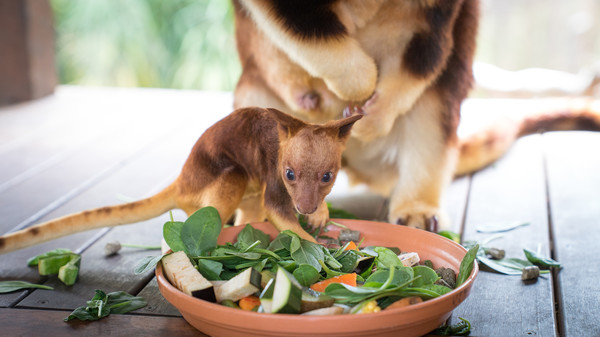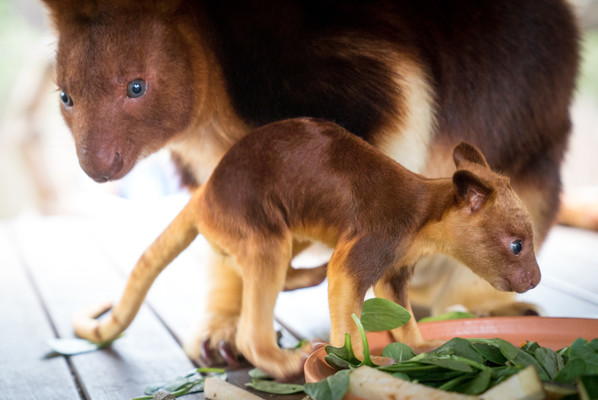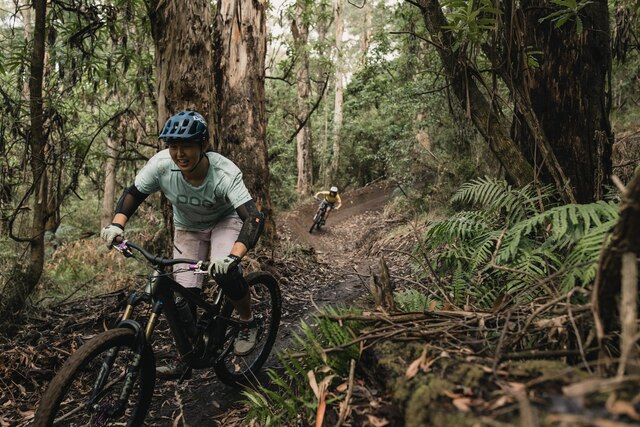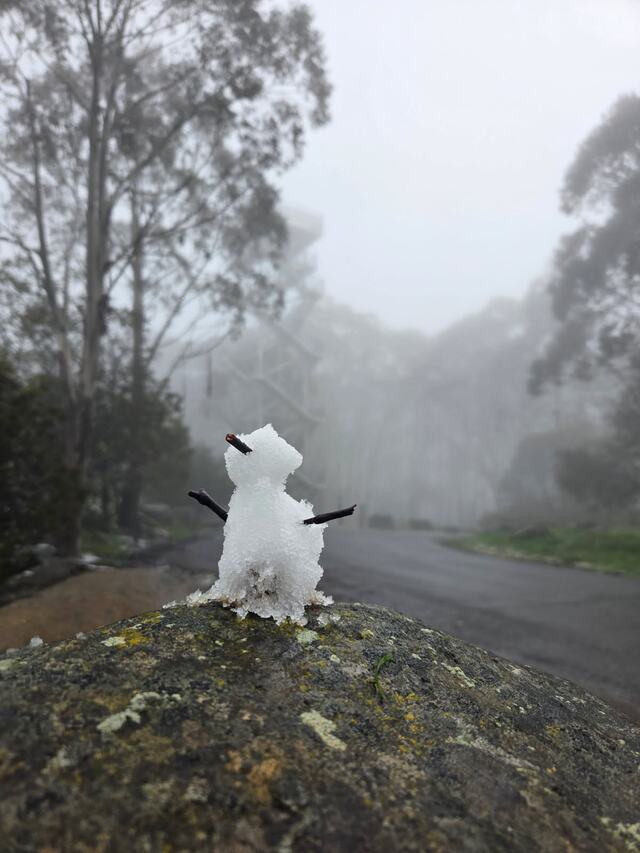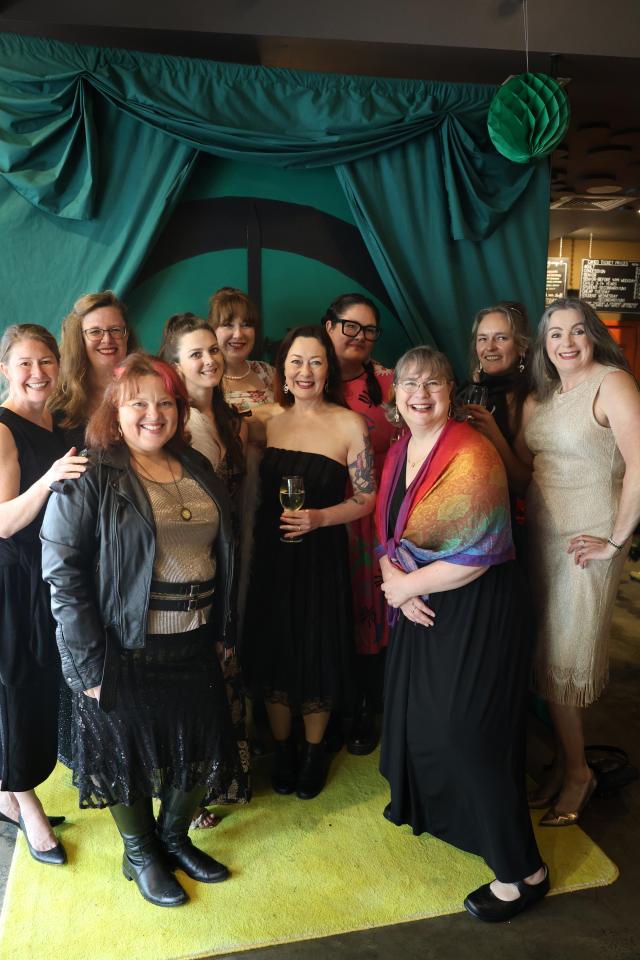Healesville Sanctuary keepers are celebrating the arrival of Chimbu, a brand new tree-kangaroo who has emerged from his mum’s pouch.
Chimbu, a rare Goodfellow’s Tree Kangaroo, is named after an area in Papua New Guinea where his wild cousins live.
He’s just over six months old, and can be seen by visitors to the Sanctuary in the tree-kangaroo enclosure with his mum Mani.
“Chimbu will mostly stay in his mum’s pouch for about ten months,” said keeper Katherine Sarris, “but he will need milk for about 12.”
“When he’s too big to fit all the way back in the pouch, he’ll just stick his head in so he can get milk.”
As the name suggests, tree-kangaroos climb and live in trees. Their long forearms and powerful claws are well adapted to clinging and jumping among tree branches, and their strong tails are used for balancing.
Ms Sarris said Chimbu is inquisitive, if a little cautious. “Whenever his mum is eating something he’ll try to sneak a bite of it.” Ms Sarris said.
“When he gets out of the pouch he like to investigate his environment, but he won’t go too far from mum at this point.”
Goodfellow’s Tree-kangaroos can be found in the rugged central mountain ranges of Papua New Guinea.
While there are no current data on wild numbers of this species, it is thought that less than 2000 remain.
“Zoos Victoria is part of an international breeding program,” explained Ms Sarris. “Mani came to us from Canberra, and she was paired up with Bagam, who came from Germany.
“These two individuals, who are as un-related as possible, were paired up to produce joeys for the program.”
Tree-kangaroos in the wild are threatened by habitat loss and hunting. Healesville Sanctuary has a captive breeding program for Goodfellow’s Tree-kangaroos as part of a regional species management program.
They are ideal ambassadors for Zoos Victoria conservation partnership with the Tree Kangaroo Conservation Program in north-east PNG, which is conserving the closely-related Matschie’s Tree-kangaroo and many other species.
The program is embedded in the local community, supporting a sustainable future for the people living in the Program’s more than 50 villages.
Zoos Victoria works with its partners to combine local community development with biodiversity conservation.


